Anatomy of a Shohin Display is reprinted by courtesy of Jonas Dupuich and Bonsai Tonight Anatomy of a shohin display
One of the first displays to catch my attention at this year’s Gafu-ten exhibit featured six trees and an accent plant.
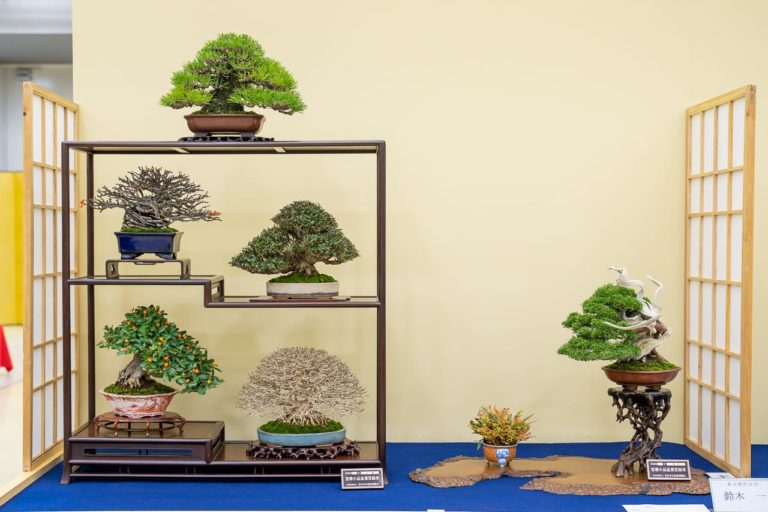
Unlike the display of larger bonsai, shohin display entails complex relationships among all of the trees in the composition. As the number of trees in a display increases, the complexity of the display also increases. A lot of this complexity arises from the convention of providing contrast in a display. Displaying different species together is one of many forms of possible contrast. A list of the most basic forms of contrast in a shohin display might include:
- Different species
- Different styles
- Different pot colours
- Different pot shapes
- Different stands
The arrangement of display elements offers another layer of complexity.
- Aim to display trees that are relatively equivalent in size
- Aim to display each tree at a different level
- Aim to display trees without leaves next to trees with leaves
- Ensure each pair of trees on a shelf point toward each other
- Ensure the top tree and the tree off to one side point toward each other
The display above does a great job meeting each of these criteria. On top of that, each tree is a great example of its species.
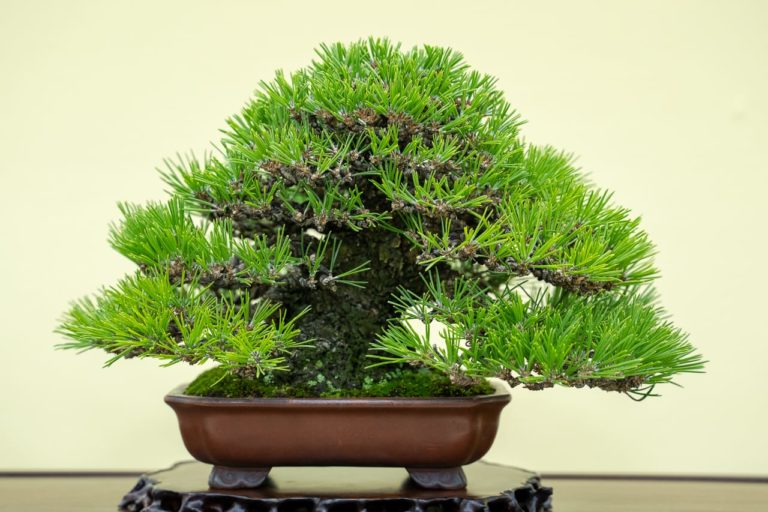
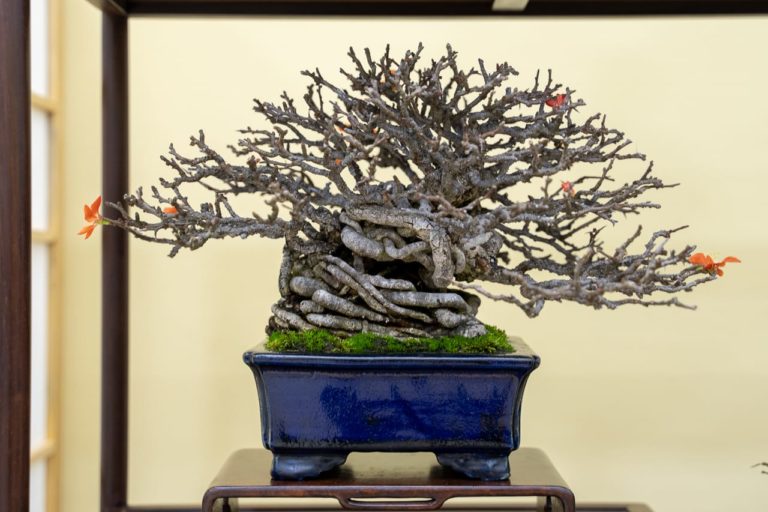
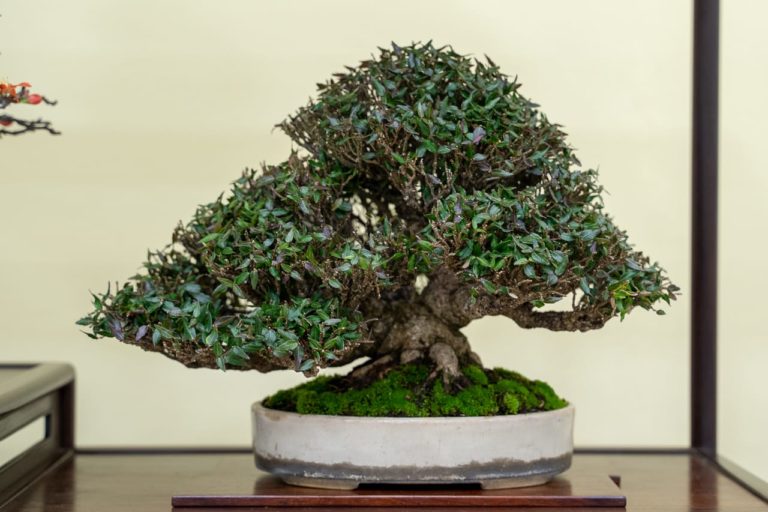
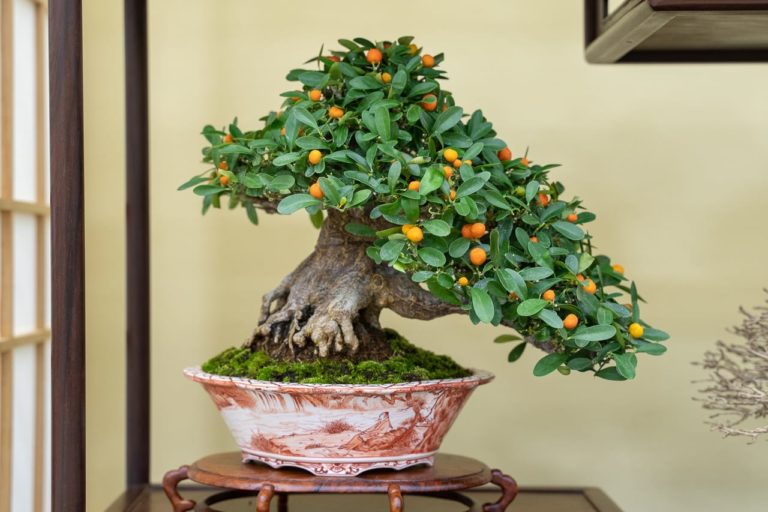
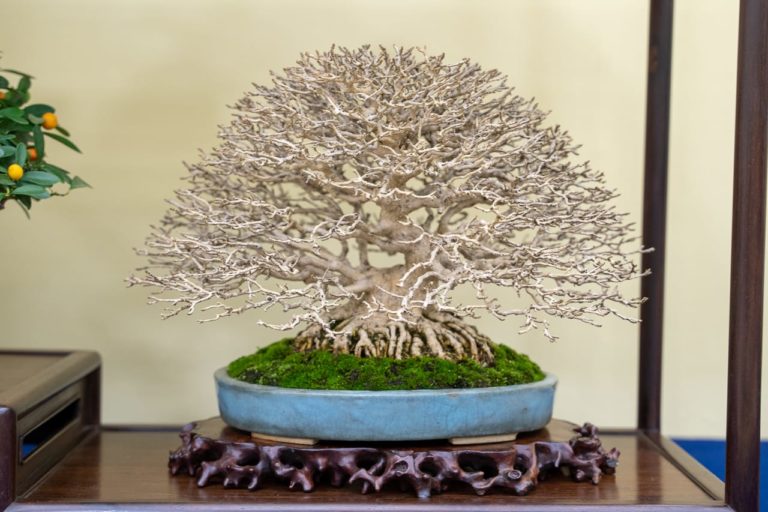
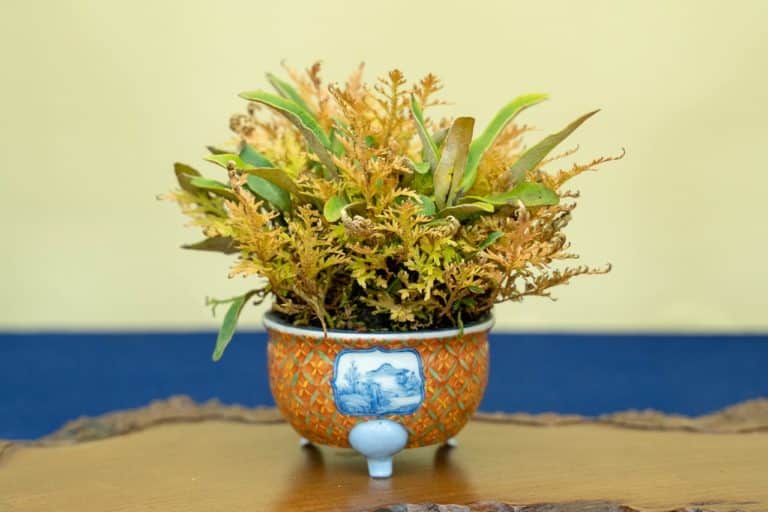
After spending a few minutes studying this display, I reminded myself that I was in a room full of such displays. More highlights from the 2019 Gafu-ten coming up next week.
Should you wish to see more, follow the links below:
Combining elements to balance shohin displays
Alternatives to box displays
Shohin judging categories
Roy Minarai pots at Gafu-ten pot competition
